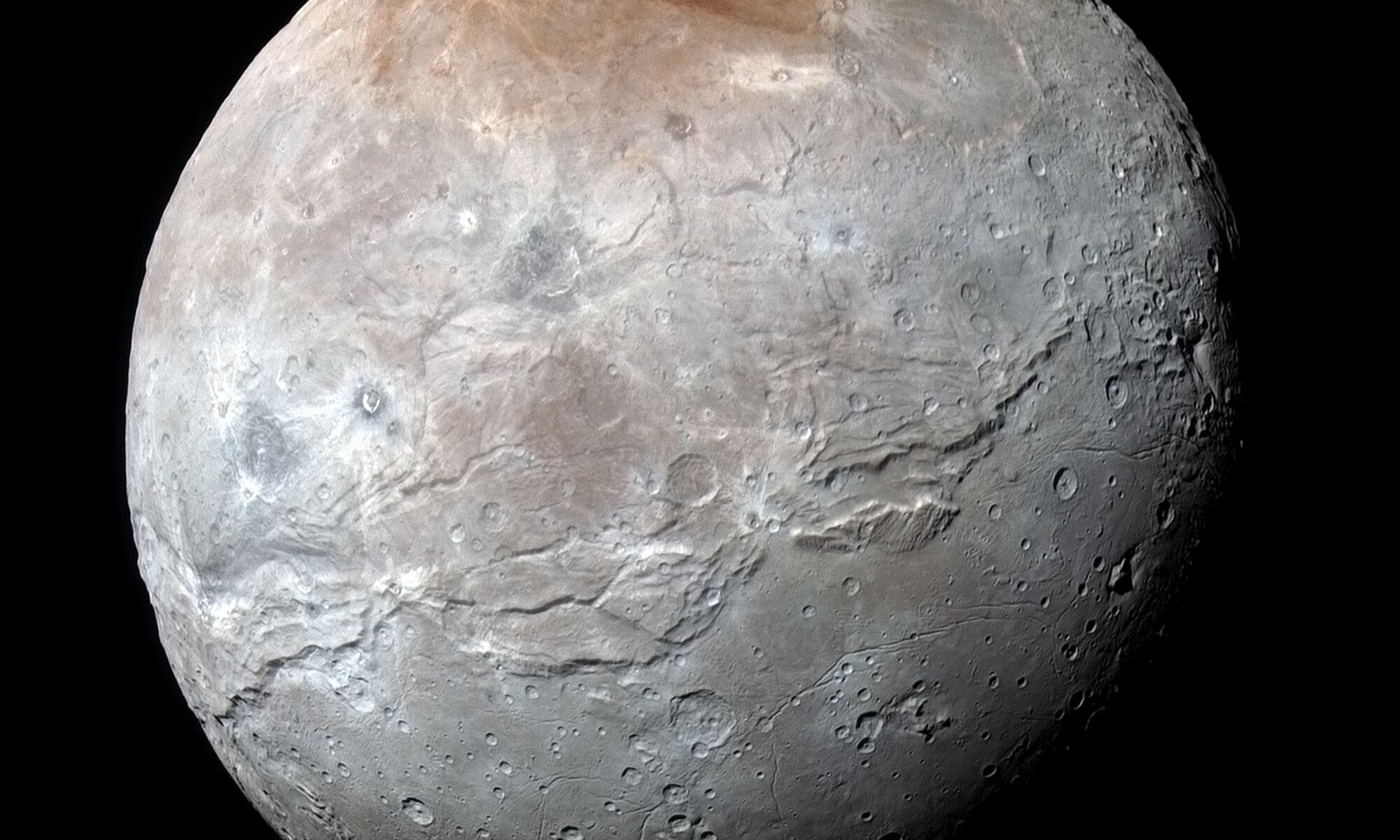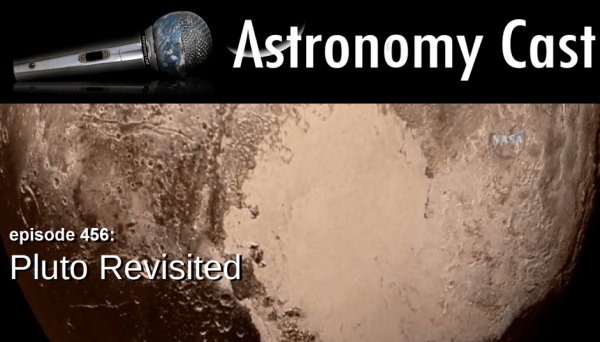Pluto may have been downgraded from full-planet status, but that doesn’t mean it doesn’t hold a special place in scientist’s hearts. There are practical and sentimental reasons for that – Pluto has tantalizing mysteries to unlock that New Horizons, the most recent spacecraft to visit the system, only added to. To research those mysteries, a multidisciplinary team from dozens of universities and research institutes has proposed Persephone – a mission to the Pluto system that could last 50 years.
Continue reading “A New Mission To Pluto Could Answer the Questions Raised by New Horizons”Webb Detects Carbon Dioxide and Hydrogen Peroxide on Pluto’s Moon Charon

The James Webb Space Telescope (JWST) has revealed magnificent things about the Universe. Using its sophisticated infrared optics, it has peered deeper into space (and farther back in time) than any observatory to date, gathering data on the first galaxies to form in our Universe. It has also obtained spectra from exoplanets, revealing things about the chemical composition of their atmospheres. In addition, Webb has provided some stunning views of objects within our Solar System, like Jupiter and its auroras, Saturn’s rings and moons, and Neptune and its satellites.
Recently, a team led by researchers from Southwest Research Institute (SwRI) used Webb Near-Infrared Spectrograph (NIRSpec) to closely examine the Pluto-Charon system. Their observations detected frozen carbon dioxide and hydrogen peroxide on the surface of Pluto’s largest moon for the first time. These discoveries add to what scientists learned about Charon’s chemical inventory from ground-based telescopes and the New Horizons mission. It also reveals more about the chemical composition of the many objects that make up the Kuiper Belt.
Continue reading “Webb Detects Carbon Dioxide and Hydrogen Peroxide on Pluto’s Moon Charon”Cryovolcanism: Why study it? What can it teach us about finding life beyond Earth?

Universe Today has had the privilege of spending the last several months venturing into a multitude of scientific disciplines, including impact craters, planetary surfaces, exoplanets, astrobiology, solar physics, comets, planetary atmospheres, planetary geophysics, cosmochemistry, meteorites, radio astronomy, extremophiles, organic chemistry, and black holes, and their importance in helping teach scientists and the public about our place in the cosmos.
Continue reading “Cryovolcanism: Why study it? What can it teach us about finding life beyond Earth?”Freezing Ocean Might Not Be Responsible for Cryovolcanic Flows on Pluto’s Moon, Charon
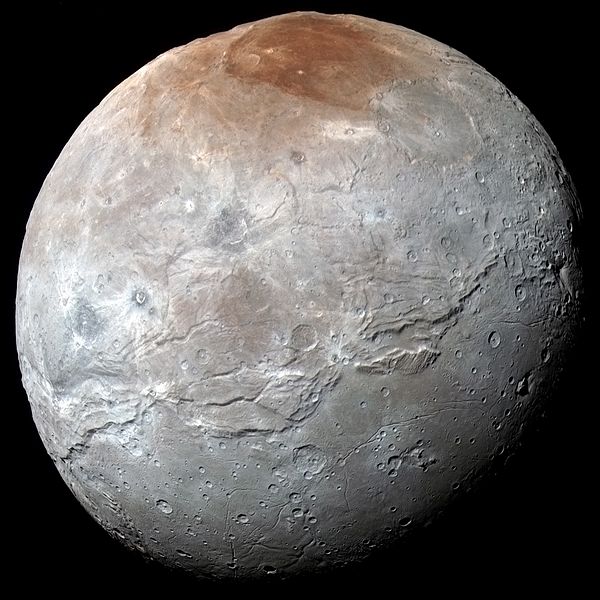
In a recent study scheduled to be published in the journal Icarus in March 2023, a team of researchers led by the Southwest Research Institute (SwRI) modeled a potential correlation between an ancient freezing ocean with cryovolcanic flows and surface canyons on Pluto’s largest moon, Charon. Their hypothesis was that when Charon’s interior ocean froze long ago, the significant stress put on the icy outer shell from the addition of more ice to the bottom of the existing shell could have been responsible for the cryovolcanic flows on the surface.
Continue reading “Freezing Ocean Might Not Be Responsible for Cryovolcanic Flows on Pluto’s Moon, Charon”Charon’s Red Cap at its North Pole? We Might Have an Answer
Pluto’s largest moon, Charon, started off as a beautiful, smooth red grape until someone came along, mostly peeled it, tried to smoosh it, then just gave up and walked away, leaving the poor moon to look like the absolute travesty that it is. Okay, so maybe that’s not exactly what happened, but Charon just looks like a mess and scientists want to know why. Never mind its smooshed equator, but what’s the deal with its red cap? Where did it come from and why is it red?
Continue reading “Charon’s Red Cap at its North Pole? We Might Have an Answer”NASA is Now Considering a Pluto Orbiter Mission
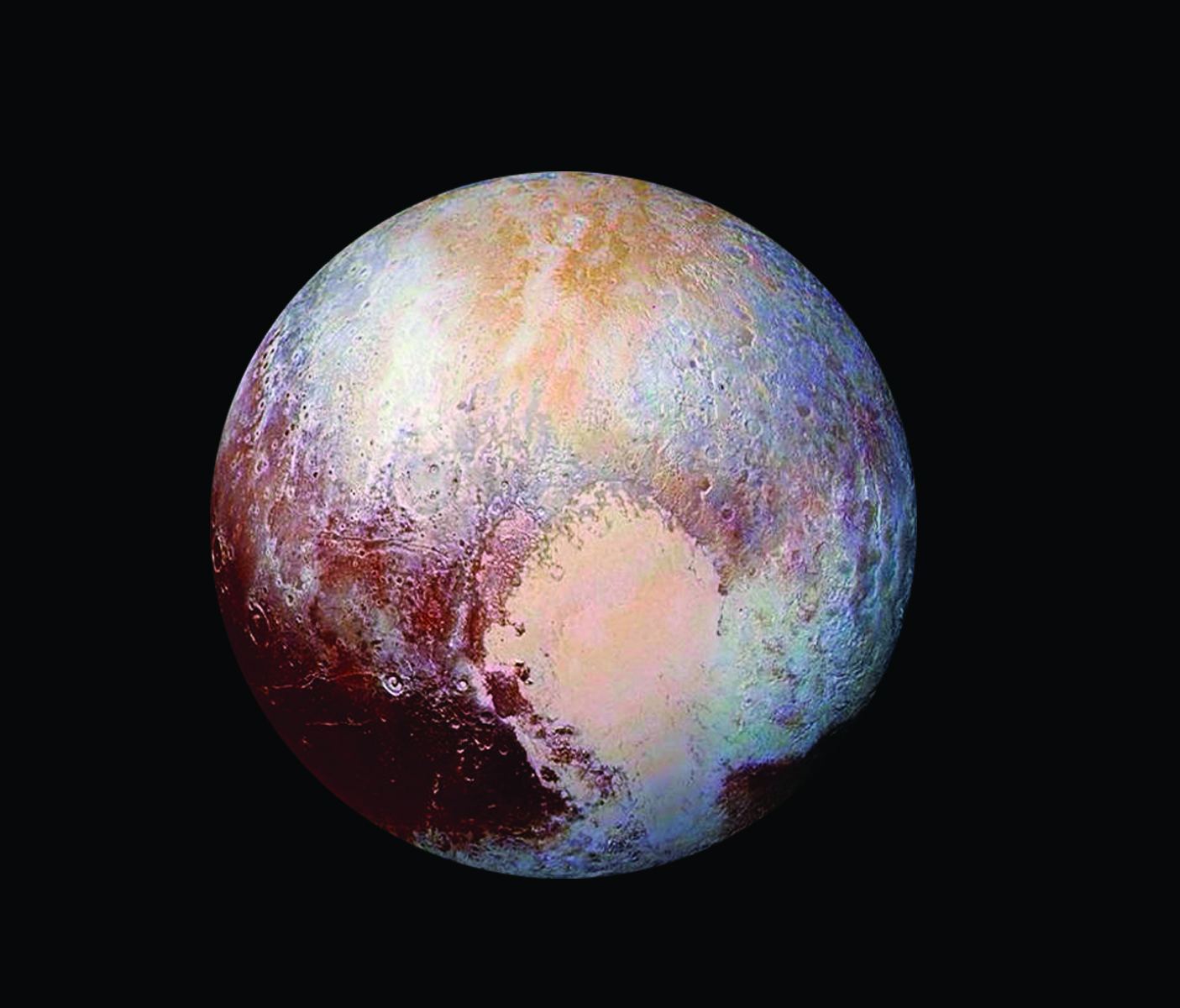
NASA’s New Horizons mission taught us a lot about Pluto, the ice dwarf planet. But the spacecraft sped past Pluto so quickly, we only got high-resolution images of one side of the planet, the so-called “encounter side.” New Horizons gave us a big leap in understanding, but in a way, it asked more questions than it answered.
The next step is clearly an orbiter, and now NASA is starting to seriously consider one.
Continue reading “NASA is Now Considering a Pluto Orbiter Mission”Pluto and Charon Don’t Have Enough Small Craters

In 2015, the New Horizons mission became the first robotic spacecraft to conduct a flyby of Pluto. In so doing, the probe managed to capture stunning photos and valuable data on what was once considered to be the ninth planet of the Solar System (and to some, still is) and its moons. Years later, scientists are still poring over the data to see what else they can learn about the Pluto-Charon system.
For instance, the mission science team at the Southwest Research Institute (SwRI) recently made an interesting discovery about Pluto and Charon. Based on images acquired by the New Horizons spacecraft of some small craters on their surfaces, the team indirectly confirmed something about the Kuiper Belt could have serious implications for our models of Solar System formation.
Continue reading “Pluto and Charon Don’t Have Enough Small Craters”Carnival of Space #558
Welcome to the 558th Carnival of Space! The Carnival is a community of space science and astronomy writers and bloggers, who submit their best work each week for your benefit. We have a fantastic roundup today, so now, on to this week’s stories!
Continue reading “Carnival of Space #558”
Pluto’s Charon Gets Mountains Named After Sci-Fi Authors Octavia Butler and Arthur C. Clarke, as Well as Many Others From History and Legend. I Approve!

In 2015, the New Horizons mission made history by being the first spacecraft to conduct a flyby of Pluto. In addition to revealing things about the planet’s atmosphere, its geology and system of moons, the probe also provided the first clear images of the surface of Pluto and its largest moon, Charon. Because of this, scientists are now able to study Pluto and Charon’s many curious surface features and learn more about their evolution.
Another interesting thing that has resulted from this surface imaging has been the ability to name these features. Recently, the IAU Working Group for Planetary System Nomenclature officially approved of a dozen names that had been proposed by NASA’s New Horizons team. These names honor legendary explorers and visionaries, both real and fictitious, and include science fiction authors Octavia Butler and Arthur C. Clarke.
Aside from being Pluto’s largest moon, Charon is also one of the larger bodies in the Kuiper Belt. Because of its immense size, Charon does not orbit Pluto in the strictest sense. In truth, the barycenter of the Pluto-Charon system is outside Pluto, meaning the two bodies almost orbit each other. The moon also has a wealth of features, which include valleys, crevices, and craters similar to what have been seen on other moons.
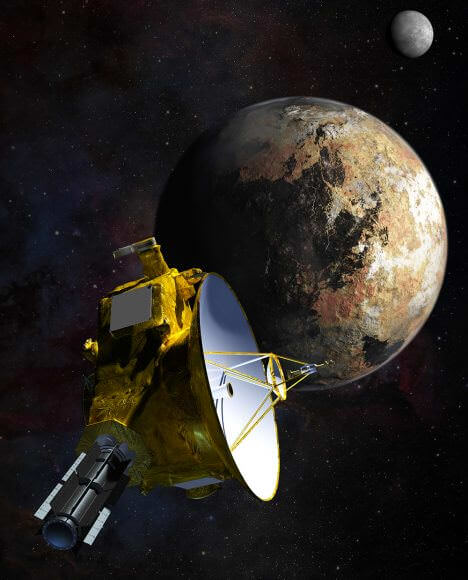
For some time, the New Horizons team has been using a series of informal names to describe Charon’s many features. The team gathered most of them during the online public naming campaign they hosted in 2015. Known as “Our Pluto“, this campaign consisted of people from all over the world contributed their suggestions for naming features on Pluto and Charon.
The New Horizons team also contributed their own suggestions and (according to the IAU) was instrumental in moving the new names through approval. As Dr. Alan Stern, the New Horizon team leader, told Universe Today via email: “We conduced a public feature name bank process in 2015 before flyby. Once flyby was complete our science team created a naming proposal for specific features and sent it to IAU.”
A similar process took place last year, where the IAU officially adopted 14 place names that were suggested by the New Horizons team – many of which were the result of the online naming campaign. Here too, the names were those that the team had been using informally to describe the many regions, mountain ranges, plains, valleys and craters that were discovered during the spacecraft’s flyby.
The names that were ultimately selected honored the spirit of epic exploration, which the New Horizons mission demonstrated by being the first probe to reach Pluto. As such, the names that were adopted honored travelers, explorers, scientists, pioneering journeys, and mysterious destinations. For example, Butler Mons honors Octavia E. Butler, a celebrated author and the first science fiction writer to win a MacArthur fellowship.
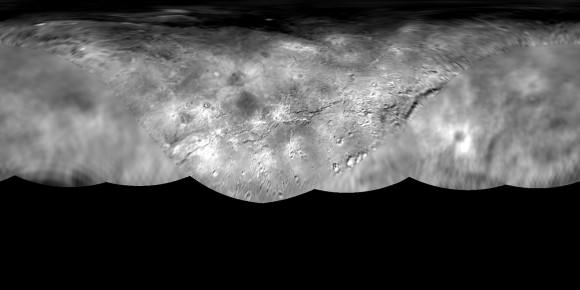
Similarly, Clarke Montes honors Sir Arthur C. Clarke, the prolific writer and futurist who co-wrote the screenplay for 2001: A Space Odyssey (which he later turned into a series of novels). Stanley Kubrik, who produced and directed 2001: A Space Odyssey, was also honored with the feature Kubrik Mons. Meanwhile, several craters were named in honor of fictional characters from famous stories and folklore.
The Revati Crater is named after the main character in the Hindu epic narrative Mahabharata while the Nasreddin Crater is named for the protagonist in thousands of folktales told throughout the Middle East, southern Europe and parts of Asia. Nemo Crater honors the captain of the Nautilus in Jule’s Verne’s novels Twenty Thousand Leagues Under the Sea (1870) and The Mysterious Island (1874).
The Pirx Crater is name after the main character in a series of short stories by Polish sci-fi author Stanislaw Lem, while the Dorothy Crater takes its name from the protagonist in The Wizard of Oz, one of several children’s stories by L. Frank Baum that was set in this magical land.
As Rita Schulz, chair of the IAU Working Group for Planetary System Nomenclature, commented, “I am pleased that the features on Charon have been named with international spirit.” Dr. Alan Stern expressed similar sentiments. When asked if he was happy with the new names that have been approved, he said simply, “Very.”

Even though the encounter with the Pluto system happened almost three years ago, scientists are still busy studying all the information gathered during the historic flyby. In addition, the New Horizons spacecraft will be making history again in the not-too-distant future. At present, the spacecraft is making its way farther into the outer Solar System with the intention of rendezvousing with two Kuiper Belt Objects.
On Jan. 1st, 2019, it will rendezvous with its first destination, the KBO known as 2014 MU69 (aka. “Ultima Thule“). This object will be the most primitive object ever observed by a spacecraft, and the encounter will the farthest ever achieved in space exploration. Before this intrepid exploration mission is complete, we can expect that a lot more of the outer Solar System will be mapped and named.
Further Reading: IAU
Astronomy Cast Ep. 456: Pluto Revisited
This week, we return to our starting point, where Astronomy Cast began: Pluto. 11 years on, we have a whole new appreciate for the dwarf planet Pluto. We’ve visited it, probed it and taken pictures. It’s time for an update.
We usually record Astronomy Cast every Friday at 1:30 pm PDT / 4:30 pm EDT/ 20:30 PM UTC (8:30 GMT). You can watch us live on AstronomyCast.com, or the AstronomyCast YouTube page.
Visit the Astronomy Cast Page to subscribe to the audio podcast!
If you would like to support Astronomy Cast, please visit our page at Patreon here – https://www.patreon.com/astronomycast. We greatly appreciate your support!
If you would like to join the Weekly Space Hangout Crew, visit their site here and sign up. They’re a great team who can help you join our online discussions!


